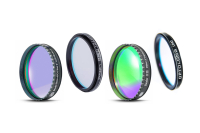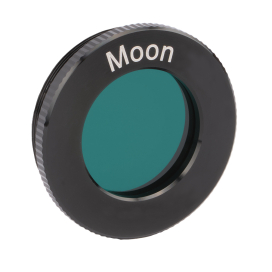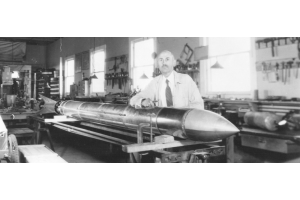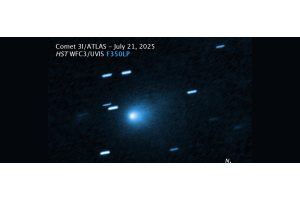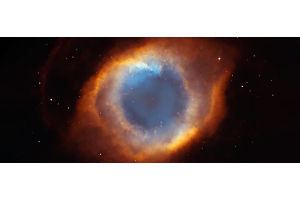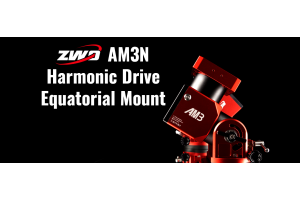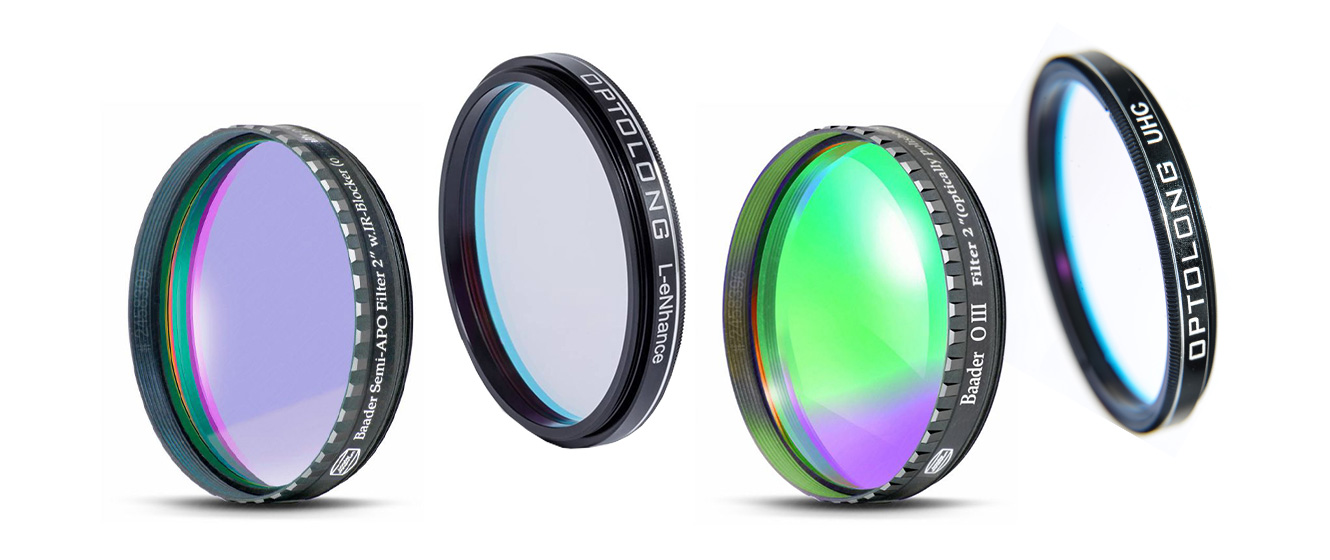
Welcome to the High Point Scientific telescope filter guide for visual and imaging astronomy filters. Here you'll find information on different types of telescope filters and what they are best used for. There is a telescope filter for every application, whether you want to enhance views through the eyepiece for observations of the planets and nebulae or wish to bring out details during astrophotography.
You'll often hear telescope filters described as Narrowband, Midband or Broadband. It is important to know that this does not necessarily apply to any one filter in particular. These terms are descriptions of any given filter's allowed wavelength of light transmission. In other words, Broadband, Midband and Narrowband designations provide a hint as to how much of the light spectrum they allow to pass through to your eye or camera. Broadband filters allow a wider portion of the spectrum to pass through to your eye and are typically used while observing, whereas narrowband filters allow a very small portion of light to pass through and are used for imaging. Midband filters fall somewhere in between. They let a medium portion of the spectrum pass through, making them suitable for both imaging and observing, depending on the desired outcome and the telescope filter in question.
Below you will find the best telescope filters listed alphabetically by name with information on what they do and what they are best suited for. You will notice that some eyepiece filters have visual and imaging versions. This is not a designation created by High Point, but rather by the manufacturer of such filters due to their light transmission and/or optimization for either visual use or imaging use.
City Light Suppression or CLS Filters - Visual
City Light Suppression filters reduce the appearance of light pollution and boost contrast for visual observing. By blocking the light produced by mercury and sodium-vapor lights typically used in urban lighting, CLS filters make night skies appear more black while the majority of the visible spectrum is permitted to reach your eye. City light suppression filters are a perfect addition to telescopes of all sizes with focal ratios of f/3 to f/15, and are a must have for the suburban or city backyard astronomer.
City Light Suppression or CLS Filters - Imaging
CLS filters for imaging are excellent contrast boosters. By permitting the majority of the visual spectrum and H-alpha lines to pass through, city light suppression filters virtually eliminate the light created by mercury and sodium-vapor lights to create darker backgrounds. Optimized for telescopes between f/3 and f/15, the CLS filter will work with telescopes of all apertures.
Clip Filters - Imaging
Clip filters refer to a specific type of filter cell (the machined mechanism that holds the filter glass in place) and are available in a wide variety of imaging filters including H-Alpha, H-Beta, Original White Balance, Pro Planet, CLS and UHC. They are designed to “clip” into the interior of your DSLR camera and are available for both Canon EOS and Nikon. By placing the filter behind the lens bayonet, standard adapters and lenses can still be used.
Color Filters - Visual
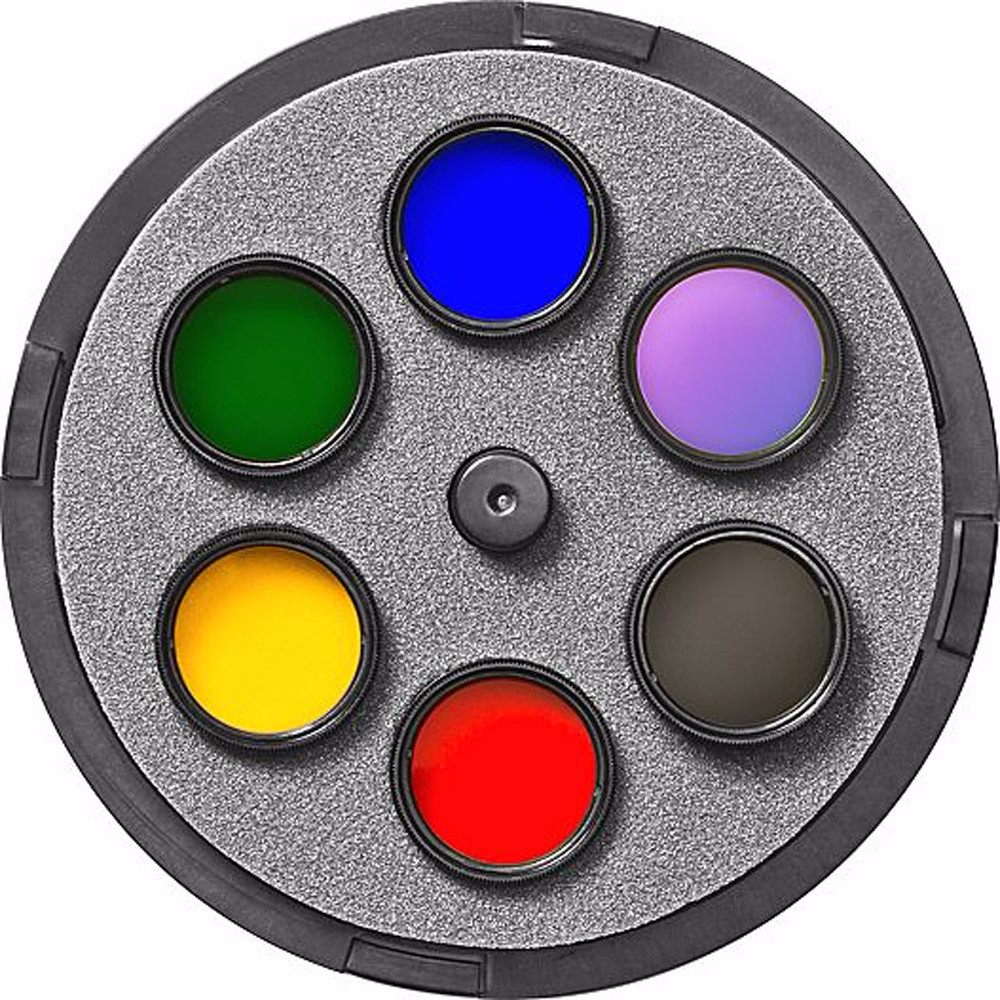
Color filters for visual use are a versatile and inexpensive addition to your observing equipment. They will bring out a range of details in the planets that your naked eye would otherwise have difficulty seeing. Color filters are often labeled using a standardized system called Wratten numbers, often used for DSLR photography as well as visual astronomy & imaging.
Please note the percentage of light transmission next to the Wratten number and official name. The higher this number, the higher the percentage of light that passes through the filter. This is important because while smaller telescopes can benefit from a filter with high light transmission, the image would dim too much when a denser filter is used. While we will give you a recommendation regarding the smallest aperture required for optimum filter use, these recommendations should be regarded as guidelines only. This is because a filter’s performance depends on the brightness of the object you are looking at as well as your telescope’s light-gathering ability. Below you’ll find a list of the most common color filters used for astronomy:
#8: Light Yellow - 83% Transmission. Great for bringing out details in the red and orange regions of Jupiter's belt and improves the contrast on the surface of Mars and the Moon. For telescopes of larger apertures (10" and more), a Light Yellow filter can bring out better detail on Uranus and Neptune, otherwise this is a good filter choice for most telescopes.
#11: Yellow-Green - 40% Transmission. Great for observing Saturn and bringing out details in the Cassini division. #11 filters provide better contrast for Mars, Jupiter and Saturn. Best with 6” telescopes or larger.
#12: Yellow - 74% Transmission. Boosts contrast for Saturn and Jupiter by contrasting with blue colored areas and highlighting red and orange areas. The #12 Yellow filter enhances contrast of the blue-green features of Mars and can help increase contrast when observing the Moon. A good filter choice for telescopes with an aperture of 3” or more.
#21: Orange - 46% Transmission. Limits transmission of blue-green portions of the spectrum. This filter can clarify delineations between blue-green and red-orange areas of Mars and is a good choice for Jupiter as well to bring out more detail in belt and polar areas. Best with apertures of 6” or more.
#23A: Light Red - 25% Transmission. Very similar to a #21 orange filter for telescopes larger than 8 inches. Users will notice a slight increase in contrast and better definition between blue-green and red-orange areas of Mars. Additionally useful for viewing Mercury during daylight or dusk. Best with apertures of 8” or more.
#25A: Red - 14% Transmission. This filter will virtually eliminate the blue and green wavelengths which results in strong contrast for Mars. Best with apertures of 8” or more.
#38A: Dark Blue - 17% Transmission. Heavily blocks red-orange wavelengths, acting nearly opposite of a #25A red filter. Equally useful in observing Jupiter and Mars for this reason. A #38A filter can bring out details of storms on Mars. Excellent for increasing cloud contrast on Venus. Best with apertures of 8" or more.
#47: Violet - 3% Transmission. A very dark filter which fully blocks red, yellow and green portions of the visual spectrum. A great choice for isolating the polar ice caps on Mars and for bringing out subtle details in Venus's upper atmosphere. For use on telescopes with apertures of 10” or more.
#56: Light Green - 53% Transmission. A great all around filter, will bring out yellow colored dust storms on Mars, enhance details of the ice caps, increase contrast on red/blue areas of Jupiter and will increase detail of the Moon. Best with apertures of 6” or more.
#58: Green - 24% Transmission. Bring out details in the lighter colored areas of Jupiter. A green filter will block blue and red wavelengths. Works to offer strong contrast in the polar ice caps of Mars and allow easier visual observation of weather on Venus. For telescopes with apertures of 8 inches or more.
#80A: Blue - 29% Transmission. Another all around great filter choice for both planets and the Moon. Will bring out amazing detail in cloud belts for both Jupiter. Offers extreme contrast for Jupiter's Red Spot and the lunar surface. For telescopes with apertures of 6” or more.
#82A: Light Blue - 73% Transmission. This filter is a very lightly colored filter which works well for nearly all planetary and lunar observing because it does not reduce the apparent brightness of the object but does offer a slight increase in contrast. Nice for splitting binary stars, checking out the gas tails of comets, and is even useful for enhancing the galactic structure of bright galaxies! Can be paired with other color filters. A good filter choice for telescopes with an aperture of 3” or more.
Comet - Visual
Unlike standard Oxygen III filters, filters for comets are optimized by transmitting the very narrow green wavelengths of light found between 511 and 514 nanometers. Contrast is greatly improved for the tails and head in gaseous comets, revealing faint details.
Deep Sky - Visual or Imaging
Deep Sky filters serve two purposes, blocking unwanted orange/yellow light typically created by urban lighting and to increase contrast for better nebula observing. By allowing the rest of the visual spectrum and IR light to pass through, contrast is enhanced for both light polluted and dark skies.
Fringe Killer - Visual & Imaging
Purple fringing or violet fringing is a natural occurrence in achromatic refractor telescopes, and fringe killer filters eliminate the undesirable blue and violet haze surrounding these objects while retaining excellent neutral color. Fringe killers are also effective IR blocking filters and work very well for imaging. Because of a wide light transmission and bright image results, fringe killer filters work with small telescopes and pair well with other filters to further refine light for imaging.
H-Alpha - Imaging
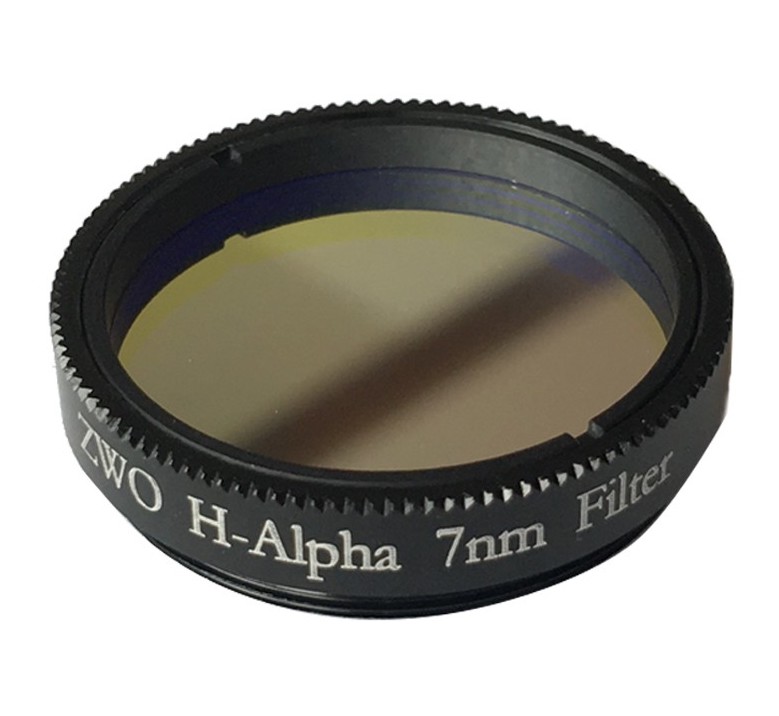
These are not H-Alpha filters meant for solar use and would be dangerous to use as such. H-Alpha imaging filters are designed to enhance details found in nebulae that are rich in ionized Hydrogen. By narrowing the transmission to the H-Alpha line only, backgrounds are exceptionally dark, allowing the faint cloudy details of these spectacular nebulae to stand out.
H-Beta - Imaging
H-Beta filters are an extreme contrast booster for telescopes that are 8” or larger and have focal ratios between f/3 and f/15. By allowing only the H-Beta line to pass through, CCD and DSLR cameras benefit from pure black skies and enhanced fine detail.
H-Beta - Visual
Amongst nebula filters, H-Beta filters are an extreme contrast booster for 8”+ telescopes with focal ratios between f/3 and f/15. H-Beta filters allow only the H-Beta line to pass through. This does not enhance many objects directly but the boost in contrast can make the difference between being able to see an object or not.
IR Cut - Imaging
IR Cut filters typically eliminate both IR and UV light, allowing just the visible portions of the spectrum to pass through. IR cut filters are used to maintain proper color balance in cameras that lack a built-in IR cut filter when shooting during the daytime.
Jupiter - Visual
Filters for observing Jupiter are normally a standard medium blue filter, Wratten #80A. The medium blue filter enhances contrast of red details in Jupiter's atmosphere by eliminating yellow and green tones, bringing out detail in the belt region and the Great Red Spot.
L-Pro Filter - Visual
L Pro filters are a specialized light pollution reduction filter and are unique in that they are multi-bandpass. Multi-bandpass filters allow several ranges of wavelengths to pass through rather than a single block like other broadband city light suppression filters. By blocking very specific wavelengths across the entire spectrum, L-Pro filters provide excellent contrast boosting and urban light reduction, but maintain natural color.
LRGB Filters - Imaging
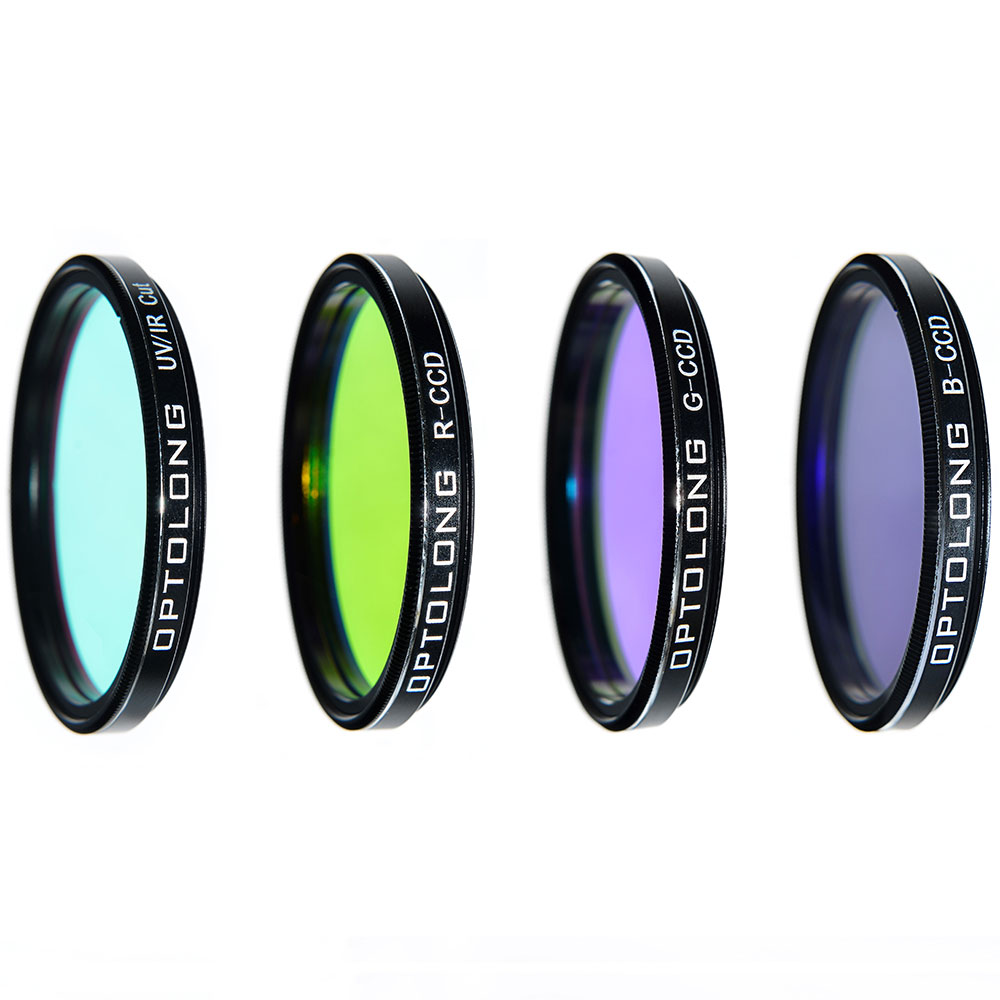
LRGB filters are a basic and necessary color filter set to create full color images with a monochrome camera. By layering exposures made with an LRGB filter set you can create highly detailed full-color images and make finite adjustments to each color layer. The L filter is a luminance filter which is a clear IR cut-off filter, R is red, G is green and B is blue. The combination of these color filters will produce images that range the full color spectrum from red to violet.
Mars Filter - Visual
Mars filters are made to bring out the surface details of the Red Planet. By blocking yellow-green wavelengths, blue-violet and red-orange wavelengths are enhanced, improving the appearance of details on Mars.
Minus Violet Filter - Visual
Minus violet filters, also known as “fringe killers”, eliminate violet and infrared light below 420 nanometers, providing a fully color corrected view through achromatic refractor telescopes that are exhibiting purple hazing or violet fringing when observing bright objects.
Moon Filter - Visual
Moon filters are like sunglasses for your telescope! The moon’s brightness, especially when it is approaching or at full illumination, can hinder our ability to see the finer details of the lunar surface. By reducing the overall brightness, our eyes are able to see the craters, peaks and valleys of the Moon's surface. Every telescope can benefit from a moon filter, regardless of the type you choose. See the entries for Neutral Density or Variable Polarizer filters below, both of which make great Moon Filters.
Neutral Density - Visual
Neutral Density filters are typically used as moon filters, but they can also help when splitting a double star or seeing the phases of Venus. Neutral Density filters dim the incoming light like any filter would do, but they do so without changing the apparent color of the object.
Original White Balance or OWB - Terrestrial Photography
Modified DSLR owners will benefit from an Original White Balance filter. This color correcting filter shifts the entire spectrum to produce normal color images, allowing a modified DSLR (where the IR filter has been removed) to be used for terrestrial daytime photography. OWB filters are available as clip filters so standard DSLR lenses can still be used.
Oxygen III or OIII - Visual
The narrowband Oxygen III filter, commonly referred to as OIII, is best for visual observations of planetary and gaseous nebulae, and is the only way you can see very faint objects like supernovae. Originally used as light pollution reduction filters, OIII filters darken the night sky, allowing greater contrast in the faint details of distant deep- sky objects. Oxygen III filters are best used on telescopes with an aperture of 8" or larger.
Oxygen III or OIII - Imaging
When used for imaging, the Oxygen III filter works as a contrast booster to bring out the natural details of deep sky objects. OIII filters are best for imaging planetary and gaseous nebulae and supernovae, as they help define details by transmitting the majority of the OIII spectral line and eliminating nearly all others. The result is very black skies and pronounced fine Oxygen III details found in a majority of deep space objects.
Pro Planet Filters - Imaging
Pro Planet filters are a type of IR pass filter, and are available in three different models: 642, 742 and 807. These numbers refer to the portion of the spectrum that is permitted to pass through to your camera's sensor. Pro Planet filters are designed to enhance non-visible light, making certain details more apparent for astrophotography and daytime IR photography purposes and eliminate the visible portions of the spectrum that contribute to poor imaging conditions.
642 BP ProPlanet filters are unique in the ProPlanet family because they restrict transmission to between 642 and 842 nanometers, eliminating the long IR portion of the spectrum. Best suited for daylight IR imaging with no long-IR hot spots, high contrast images with excellent color rendition, high-res lunar and planetary imaging and deep-sky imaging of HII regions. 642 Pro Planet filters also work to effectively reduce the appearance of light pollution by increasing contrast.
742 ProPlanet filters allow all portions of the spectrum above 742 nanometers to pass, including the long IR portions. By cutting off all visible light, the planets and moon remain more stable but exposure times remain nearly identical to images taken without a filter. You can also image during dawn and twilight hours because the sky is darkened to black by eliminating the visible portion of the spectrum. 742 Pro Planet filters are also great for IR photography of nature when paired with a modified DSLR, producing stunning IR images of flowers and trees. If your seeing conditions are very poor and you are using a telescope larger than 10", the 807 Pro Planet filter is the better option.
The 807 ProPlanet Filter is an alternative to the 742 Pro Planet and was designed for telescopes with apertures of 10" and larger. It will produce results very similar to the 742 Pro Planet filter, but exposure times are nearly doubled.
Semi-APO - Visual
Semi-APO filters vastly improve achromat refractor performance by providing enhanced contrast and color correction. By combining the coatings of a Violet Reduction filter with a Skyglow filter, a filter is created that completely removes violet from your view while maintaining totally neutral color balance and boosted contrast.
Skyglow - Visual
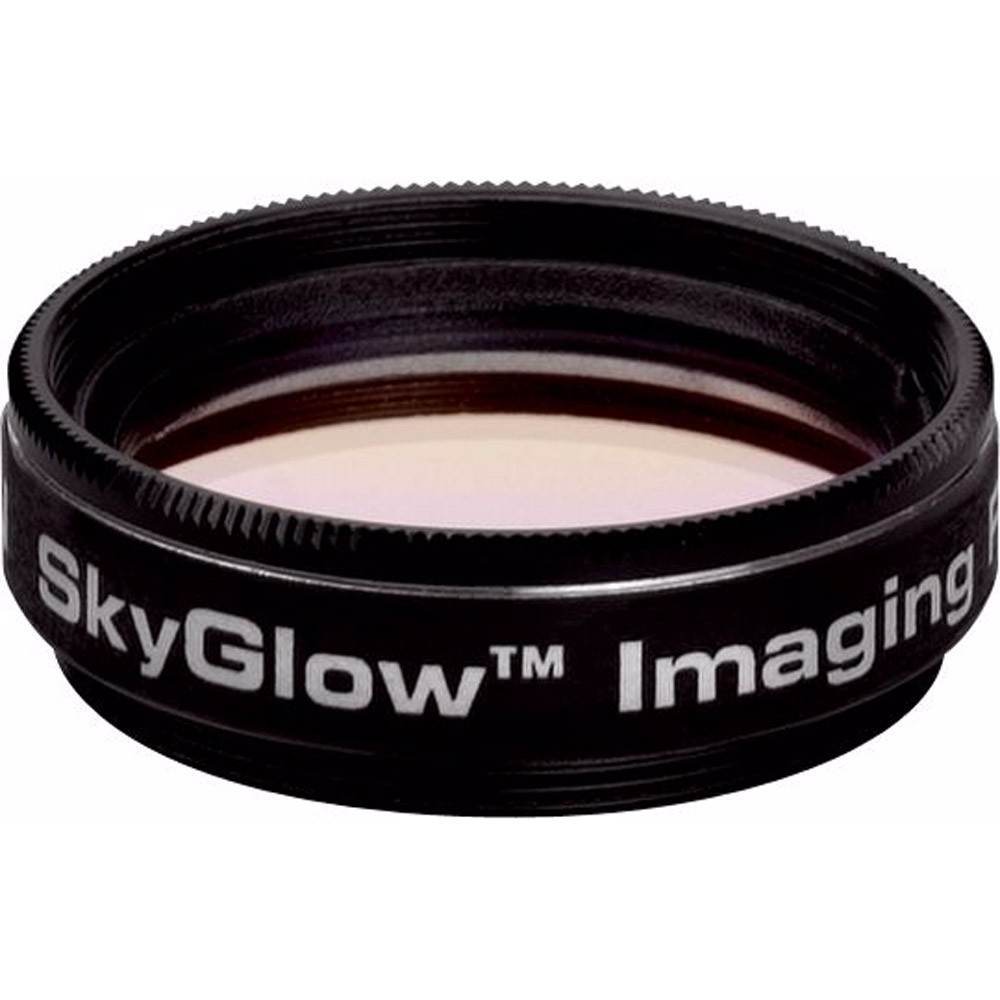
Part of the light pollution reduction filter family, Skyglow filters are a moderate contrast booster and help eliminate the common orange/yellow light created by the mercury and sodium-vapor lights found in most urban lighting. Skyglow filters are designed specifically to enhance details found in most nebula by allowing maximum transmission of the H-alpha, H-beta and OIII spectral lines. Skyglow filters can be slightly helpful in boosting contrast for star cluster and galaxy observing as well.
Sulfur II or SII - Imaging
SII narrowband filters isolate the 672 nm Sulfur II region of the spectrum, serving as contrast boosters and light pollution reduction filters for CCD and DSLR imaging. When combined with other narrowband filters for imaging in light polluted areas, full detail is captured in vibrant false-color.
UBVRI Filter Sets - Imaging
UBVRI filters are a type of broadband filter set used for CCD imaging. Similar to LRGB filter sets, UBVRI filter exposures are layered to create complex images rendered in full color and detail. In this case the U = Ultra Violet, B = Blue, V = Visual, R = Red, I = Infrared. Each filter will bring out specific details in nebulae and galaxies and individual exposures can be varied to capture specific details in nebulae, galaxies and other deep sky objects.
UHC or Ultra High Contrast - Visual
Ultra High Contrast filters are commonly called UHC filters. UHC visual filters are very useful for nearly all observing situations. By blocking out typical orange/yellow wavelengths of light, light pollution is effectively reduced to create more contrast between the 'black' night sky and the objects you want to view. UHC filters are suitable for telescopes of practically all apertures.
UHC or Ultra High Contrast - Imaging
Ultra High Contrast filters block out typical orange/yellow wavelengths of light, reducing the effect of light pollution to allow for more contrast between the 'black' night sky and the objects you want to capture. Suitable for telescopes of nearly all apertures. CCD camera users should pair their UHC filter with an IR blocking filter. Standard and modified DSLR cameras will gain from the contrast-enhancing abilities of a UHC filter, but these filters are not suitable for use with planetary webcams.
UV/IR Cut Filters - Imaging
UV and IR cut filters block ultraviolet and infrared light, which can cause annoying purple fringing when imaging with a DSLR or CCD camera. More precise than typical Minus Violet and Fringe Killer filters, UVIR Cut filters will block all light below 400 nanometers.
Variable Polarizer - Visual
Variable Polarizing filters are Moon filters that act like an adjustable dimmer. A pair of filters sit within a single ring and can be rotated to adjust the effective darkness of the filter. This gives the user the ability to vary the amount of light passing through and view the Moon and other very bright objects in a comfortable way.
Venus Filter - Imaging
Venus filters are UV-pass filters, allowing ultraviolet light between 300 and 400 nanometers to pass through and enhance details in the atmosphere around the planet Venus. Venus filters are used specifically for imaging due to the eye's sensitivity to ultraviolet light.
Click the arrow above to see MLA, APA, and Chicago Manual of Style citations.
MLA:
High Point Scientific Team. "Best Telescope Filter Guide," AstronomyHub, High Point Scientific, 19 Jan. 2021, https://www.highpointscientific.com/astronomy-hub/post/best-telescope-filter-guide.
APA:
High Point Scientific Team. (2021, January 19). Best telescope filter guide. High Point Scientific. https://www.highpointscientific.com/astronomy-hub/post/best-telescope-filter-guide
Chicago Manual of Style:
Bibliography:
High Point Scientific Team. "Best Telescope Filter Guide," AstronomyHub (blog), High Point Scientific, January 19, 2021. https://www.highpointscientific.com/astronomy-hub/post/best-telescope-filter-guide.
Footnote:
High Point Scientific Team, "Best Telescope Filter Guide," AstronomyHub, High Point Scientific, January 19, 2021, https://www.highpointscientific.com/astronomy-hub/post/best-telescope-filter-guide.





